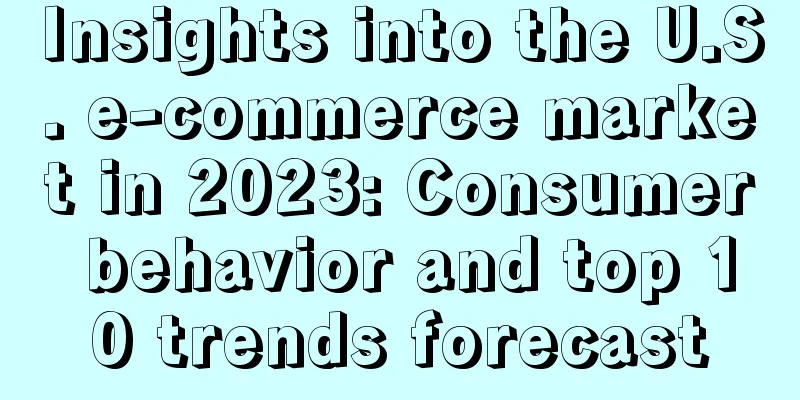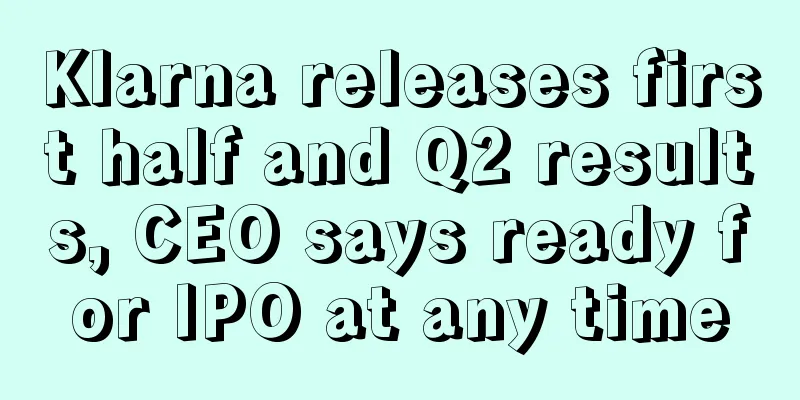Insights into the U.S. e-commerce market in 2023: Consumer behavior and top 10 trends forecast

|
As we enter 2023, the complex global economic environment has affected the e-commerce market in various ways. In the past three years, the US e-commerce market has experienced extreme changes in consumer shopping behavior and competition between brands and retailers. Retail companies need to readjust their deployment to meet the new changes in consumer demand. Feedvisor released the 2023 US e-commerce market insight report in January this year. Starting from the two aspects of economy and newly formed consumer behavior, it put forward the three major driving factors of current US consumer purchasing behavior, as well as the top ten trends and predictions of the US e-commerce market in the coming year. Three driving factors for American consumers to buy 1. Consumers pay more attention to product price and value The report pointed out that 66% of American consumers prefer to buy private brands of large retailers rather than independent brands, mainly because private brands are cheaper. However, Generation Z and millennials are exceptions, and they are more likely to contact independent brands through social media. The purchasing decisions of consumers in the middle and low-income groups are more affected by price, while the decisions of high-income earners are more dependent on product value. 76% of Amazon shoppers prefer to buy Amazon’s own-brand products over third-party brand products, likely because Amazon can offer similar products to third-party brands at a lower price. The main factors that influence consumers to choose private label products on Amazon include price (72%), low shipping costs (60%), product reviews (57%), product appearance/listing quality (54%), fast shipping (52%), and flexible return policies (49%). 2. Consumers expect a convenient shopping experience The report found that U.S. consumers are increasingly using new technologies in their purchasing process. Here are the most commonly used tools: First is the application of QR codes in online shopping. Currently, 24% of consumers use QR codes when shopping online. In the field of e-commerce, the main function of QR codes is to guide customers to repurchase or optimize the shopping experience, such as scanning the QR code of a product to replenish the stock with one click or scanning the QR code of a physical store and placing an order online. The second is the application of AR technology in online shopping. Currently, 18% of American consumers use AR technology when shopping online. It is expected that by 2025, nearly 75% of the world's population and almost all smartphone users will frequently use AR. Some brands also said that by providing AR shopping experience, the conversion rate can be increased by 94%.
3. Consumers are increasingly shopping through social platforms Research shows that 52% of American consumers have shopped through social platforms in the past six months, and social shopping is becoming a consumer habit. A large number of consumers will search for relevant information on social platforms before buying, and millennials and Generation X are more likely to be attracted. The most popular social shopping channels among consumers are Amazon (60%), Facebook (56%) and Instagram (43%), and 37% of consumers have purchased a product after seeing a recommendation from an Amazon influencer. Consumers of beauty and personal care products and apparel most often place orders through social media channels. Authenticity is the main factor that promotes consumer social shopping, including UGC content and live broadcasting. In addition, consumers tend to buy products from influential people, and combining the brand's target audience with the influencer's audience is more likely to succeed. 10 e-commerce market trends and predictions for 2023
1. Mobile e-commerce and social e-commerce will dominate Mobile commerce has been hailed as the next retail frontier, accounting for 39% of US e-commerce sales in 2022, and its share is expected to double between 2022 and 2025. The US social commerce market is on a growing trend and is expected to become a $79.64 billion industry by 2025.
2. The development of the creator economy Driven by the growth of social commerce, the U.S. creator economy will continue to develop in 2023. Entering 2023, brands and retailers have limited budgets, and micro-influencers with 5,000-100,000 followers will attract more attention from brands. Micro-influencers also tend to have higher engagement rates with their audiences and they tend to live more like their audiences. One way to find these influencers is to search for relevant hashtags on the platform, such as #TikTokmakemebuyit, #amazonfinds.
3. Brands and retailers are increasingly leveraging shoppable videos As short videos become more popular, more brands and retailers are expected to use video marketing. The survey shows that 54% of American consumers want to see more videos from brands they support, and the video format also helps increase the likelihood of consumers purchasing (73%). 4. Over-the-top (OTT) advertising adoption may increase As advertising costs rise and competition for ad space intensifies, inflation and budget cuts will force brands and sellers to look for cost-effective advertising channels in 2023, and the adoption of over-the-top (OTT) advertising is on the rise. On the one hand, OTT audiences are rising, with 62% of U.S. households currently at least subscribing to these services. OTT advertising is also more cost-effective. By the end of 2023, U.S. OTT video ad spending will account for 3.4% of all digital ad spending and 10% of all video ad spending. 5. DTC companies will rely more on marketplaces Due to weak consumer demand, in 2023 DTC brands will move as close to channels as possible that are closer to consumers. More brands may cooperate with market platforms to expand their audience. Amazon, with its huge user base, may become the first choice for many brands to settle in. The BuyWithPrime provided by Amazon will also help DTC compete with its rivals in terms of fast delivery. 6. New consumer realities emerge More price-conscious consumers and excess inventory are causing many consumers to reconsider the brands they have been buying from. Brands will need to be more responsive to feedback throughout the customer shopping journey to ensure consumers feel “seen and heard” and increase brand loyalty. 7. Membership subscription services will become a key loyalty driver Demand for membership subscription services will rise as more consumers seek exclusive deals and discounts as well as faster delivery services. 64% of consumers said having a membership influences their shopping channels, up 7% from the previous year. Many retailers see them as a core tool to retain customers. Over the past year, major retailers have seen an increase in demand for membership subscriptions, such as Amazon Prime, which is at its highest subscription level to date, and Walmart has shifted its membership strategy to focus on higher-income consumers, but with limited success. 8. Scaling and standardizing retail media networks Retail media networks will continue to grow their share of US digital ad spending in 2023, accounting for 11%. Amazon, Walmart and Instacart lead the pack, with 77% of retail ad spending coming from Amazon. As operating costs and a potential recession approach, overall marketing and advertising expenses will be cut, leading to the importance of retail media networks being magnified, and more brands will use retail media networks as one of their advertising channels. Therefore, it is expected that more advertising agencies will emerge, and retail media advertising will tend to be scaled and standardized. 9. Pay more attention to measuring the return on advertising investment This year, global advertising expenditure is expected to grow slightly by only 4%, indicating a slowdown in overall advertising spending. Financial constraints will make companies pay more attention to the return on advertising investment in 2023. Brands are also expected to use more advertising measurement tools, which will also bring richer insights. Brands that integrate data into their business workflows for new product innovation, SKU prioritization, pricing, content, advertising, and more will see the greatest success and highest return on their advertising investment. 10. Artificial intelligence will penetrate the entire workflow of e-commerce Artificial intelligence is gradually being applied to the entire workflow of the e-commerce market. The latest popular artificial intelligence technology is ChatGPT, which can automatically reply to customer questions, and DALL-E2, which is used to create original images. The most practical use of AI for Amazon sellers in 2023 will be for pricing. As rapidly fluctuating market conditions and shifting consumer behavior continue to dominate, sellers will increasingly turn from traditional pricing to dynamic and AI-based pricing. Editor✎ Ashley/ Disclaimer: This article is copyrighted and may not be reproduced without permission. |
<<: US Q4 digital advertising report: Amazon and Meta advertising costs fall
>>: $4.7 billion in severance pay! Amazon, Meta and other companies spend a fortune on layoffs!
Recommend
A 985 master's degree holder in his early 30s, quit his job with an annual salary of 250,000+, how difficult is it to break through the annual salary of 300,000 with Amazon? What position do you recommend?
Iszzzz My C position 1. Personal information: 1. E...
A large number of sellers’ orders have been cut in half. Has Amazon’s advertising rules changed?
MarketPlace Pulse data shows that in 2022, Amazon ...
Check yourself! 392 accounts were accused of copyright infringement, and...
Recently, a large number of infringement cases hav...
What is Amazon Overseas Selling Assistant? Review of Amazon Overseas Selling Assistant
Amazon Global Selling Assistant is an official sal...
What is Google Shopping? Google Shopping Review
Google Shopping is a price comparison product unde...
Because of this, your European store will soon be taxed twice!
focus on Distance from Brexit Deadline besides 15...
Why is the best-selling product suddenly not selling well? !
Recently many people have reported that their pro...
What is SOJOS? SOJOS Review
SOJOS is a Wenzhou foreign trade enterprise specia...
What is Facebook Pay? Facebook Pay Review
Facebook Pay is a mobile payment service launched ...
What is the Guangzhou Intellectual Property Special Fund Management Measures? Guangzhou Intellectual Property Special Fund Management Measures Review
The Guangzhou Intellectual Property Special Fund M...
How big is Albertsons' e-commerce ambition? It launched 3 e-commerce initiatives in one week!
It is learned that American grocery giant Albertso...
Cross-border fraud is rampant! Many Amazon sellers have encountered review scams!
▶ Video account attention cross-border navigation ...
What is Marktplaats? Marktplaats Review
Marktplaats is a Dutch second-hand trading platfor...
Under the wave of account bans: Amazon sellers’ way to save themselves
For cross-border e-commerce sellers, Amazon's ...









